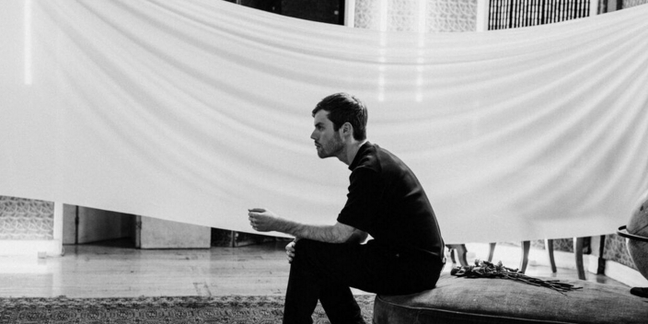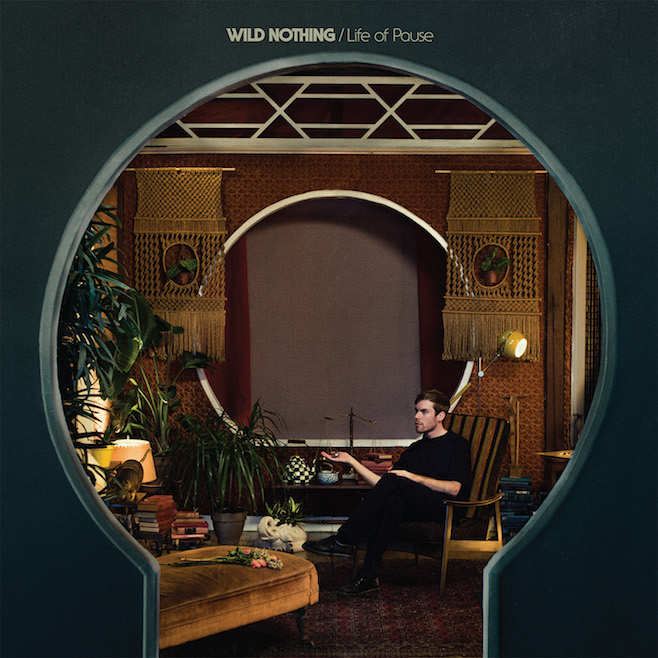
Wild Nothing Talks New Album Life of Pause

Photo by Shawn Brackbill
February 19 marks the arrival of Life of Pause, Jack Tatum’s latest album as Wild Nothing. The follow-up to 2012′s Nocturne was recorded in Los Angeles and Stockholm with producer Thom Monahan and features guest musicians including Peter Bjorn & John’s John Eriksson and Medicine’s Brad Laner. Last month, he shared two tracks from Life of Pause, “TV Queen” and “To Know You”.
Earlier this week, Pitchfork caught up with Tatum at a café in Brooklyn. (The Blacksburg, Virginia native currently lives in Brooklyn, though he is planning a move to Los Angeles.) In addition to revealing which collaborations didn’t make the final project, Tatum spoke at length about his love of soul music, the art of arranging and sequencing a pop album, and more.
Pitchfork: What music influenced the making of Life of Pause?
Jack Tatum: Just like anybody else, my taste has evolved so much since I was in my early ’20s. I was listening to a lot of soul. A lot of Philly soul, sweet soul music, but also people that were influenced by that music, like Todd Rundgren, who obviously took a lot from soul music, and did something much more bizarre with it. I was drawn to that, and to him. I listen to a lot of film music, too.
Pitchfork: Were there any overarching sonic concepts that you feel set this record apart from previous ones?
JT: The initial goal for this record when I started writing it and the thing that I just kept saying to myself and telling other people was that I wanted it to sound more organic. I was afraid after making Nocturne that it felt very soft but very mechanical. Very rigid in a way that was intentional. I was invoking an era where I needed things to be that way. I needed things to be rigid. And so I wanted this record to feel more natural. I wanted it to ebb and flow in a way that the other records did not. Almost like, to try and emulate more that sense that there are people that are making this. And because of that, I tried to open myself to letting more people into this record than I did in the past.
Pitchfork: You’re a multi-instrumentalist. What’s your favorite instrument to play?
JT: Bass. Love bass. It’s just the best instrument. It’s the most fun to me. I enjoy writing the bass lines more than anything else. And there a lot of songs that I would start on bass. It really is the framework for a song. There are so many songs on this record that I kind of charted out because of the way the bassline works.
Pitchfork: Did any other musicians help out with the record?
I didn’t do the drums. [Peter Bjorn & John's John Eriksson, as well as Pelle Jacobsson, contributed drums to the album.] And there’s a bit of guitar that I didn’t do, because I asked Brad Laner to play guitar on some of the record. He played in a band called Medicine.
I did a lot of writing with my friend Jorge Elbrecht [Violens, Lansing-Dreiden, Ariel Pink]. And my friend Jacob Portrait [of Unknown Mortal Orchestra and Blouse], who ended up mixing the record. So we did some writing together. None of that stuff ended up on the record, but it was still extremely helpful in getting me to where I needed to be.
Pitchfork: What was your approach to songwriting on this album?
JT: Most of my songs are very straightforward. I’m a believer in classic songwriting. So many of my songs really do have these strict verse, chorus, bridge, type structures. I don’t really deviate from that too much because I feel that’s what pop music is. And it’s kind of one of those “If it’s not broke, don’t fix it” sort of things. Which is why I do find myself so drawn to soul music in that sense: because when you listen to old Motown songs, there is a very strict sense where each part happens and what each part accomplishes.

Pitchfork: Do you view your albums as having a certain arc? An A-side and a B-side?
JT: Kind of. I went through a few different rounds of trying to figure out how to sequence it. I think my judgement was a bit clouded after I first finished it because you know, I hadn’t lived with them in their finished form yet. And I had this idea at first that I really had to top-load it and have all the active songs on one side and the more chilled out songs on the other. So that was the initial thing that I tried to do and it didn’t really work and everyone really poo-pooed it. I also feel like it’s kind of stupid at this point, but I still do view the record as an A-side / B-side kind of thing. Mentally, I can’t get myself out of that.
Pitchfork: You mentioned an interest in film music earlier. Would you ever want to score films?
JT: I would. I could totally see myself doing that. I think it’s an entirely different way to work, and it seems a little intimidating, but I would be game for it. There are a lot of things I could see myself doing that aren’t this. I can’t see what I’ll be doing in five years or ten years musically.
Watch Wild Nothing perform “This Chain Won’t Break” at Captured Tracks’ fifth birthday celebration:













Recent Comments